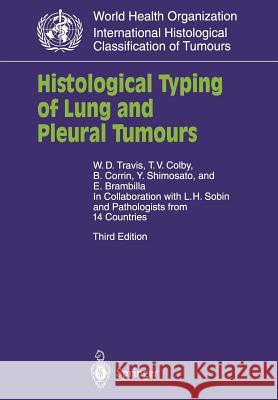Histological Typing of Lung and Pleural Tumours » książka
Histological Typing of Lung and Pleural Tumours
ISBN-13: 9783540652199 / Angielski / Miękka / 1999 / 156 str.
Lung cancer is currently the most frequently diagnosed major cancer in the world and the most common cause of cancer mortality world- wide. This is largely due to the carcinogenic effects of cigarette smoke. Over the coming decades, changes in smoking habits will greatly influ- ence lung cancer incidence and mortality throughout the world. These changes may also impact upon the histological types of lung cancer. Tumour classification is important for consistency in patient treat- ment, and because it provides a basis for epidemiologic and biologi- cal studies. The previous WHO classification was published in 1981 and since then considerable progress has been made in our understanding of cer- tain lung tumours 1. The concept of neuroendocrine tumours of the lung has been refined with recognition of large cell neuroendocrine carci- noma and modification of criteria for atypical carcinoid. Atypical ade- nomatous hyperplasia is now recognized as a potential precursor to adenocarcinoma. Studies have documented the histological hetero- geneity of lung carcinomas, particularly among adenocarcinomas and poorly differentiated carcinomas. Molecular studies have also shown that hamartomas and sclerosing hemangiomas are true neoplasms rather than tumour-like lesions. This classification is based on histological characteristics of tumours seen in surgical or needle biopsy and autopsy material. Though a large percentage of lung carcinomas are now diagnosed on cytology specimens, the classification does not address cytology.











